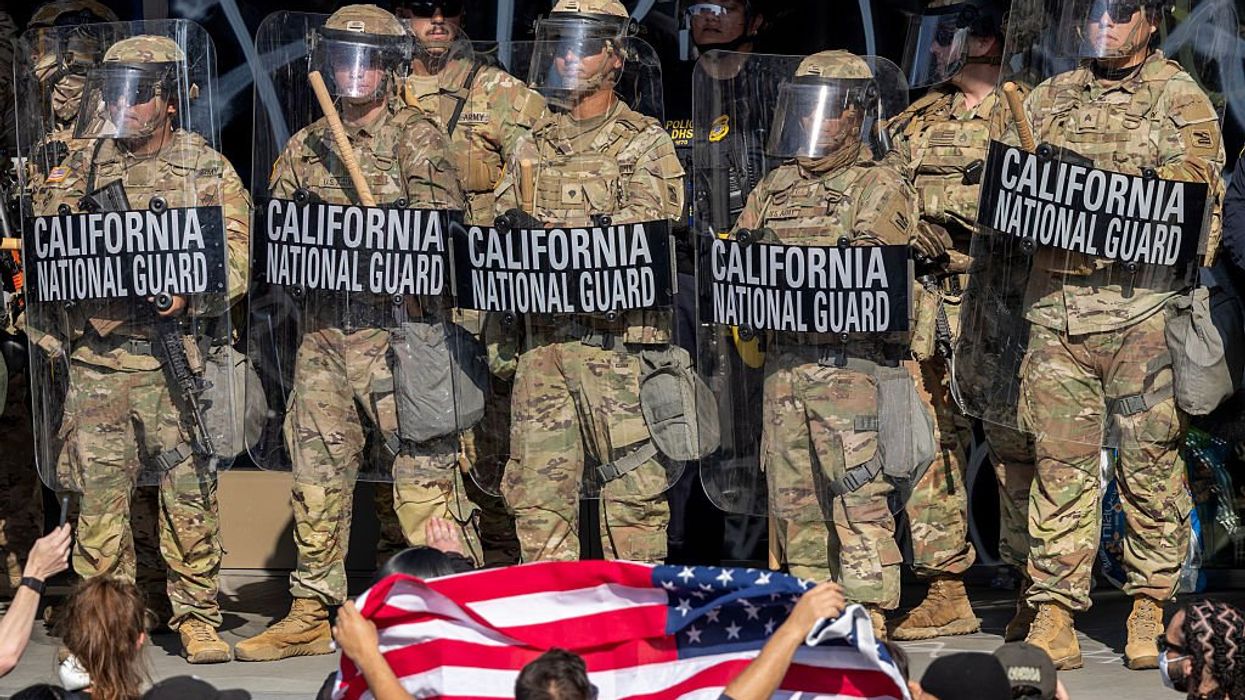Anyone who attended high school probably remembers their world history teacher talking about countries that militarized their law enforcement to make what is referred to as a police state. Examples taught should have included SS members of Nazi Germany (1925-1945), the secret police—NKVD—of the Soviet Union (1934-1946), the military regime of Chilean Dictator Augusto Pinochet (1973-1990), and the apartheid-era (1948-1994) of South Africa.
On April 28, President Donald Trump issued an 879-page executive order (EO) commanding Pam Bondi and Pete Hegseth to work with Kristi Noem and other agencies to “increase the provision of excess military and national security assets in local jurisdictions to assist State and local law enforcement.”
The Legal Defense Fund states Trump’s EO directs federal resources to “promote aggressive policing tactics and further militarize local law enforcement agencies, make it more difficult to hold officers accountable for misconduct and wield the power of prosecution as a threat.” Writer Jim Jordan opines in a June 14 essay that Trump’s EO “calls for a militarized police service in the US, one that essentially operates under martial law” (CommonWealth Beacon).
Stephen Miller and Project 2025’s Police State Proposal
It should be no surprise that Trump’s EO is rooted in Stephen Miller, the far-right anti-immigration policy advisor to the Heritage Foundation on its creation of Project 2025, the playbook for Mr. Trump to implement in the first 180 days of his presidential administration. And, behold, July 19 was Trump’s 180th day in office.
One of the key components of the 922-page Project 2025 playbook for Donald Trump to follow was mass deportations, increasing border enforcement, and changing America’s long-revered asylum system (Project 2025 is a threat to democracy, June 4, 2024, The Fulcrum).
Trump’s aggressive actions
Most people know that ICE, DHS, FBI, and DEA conducted coordinated raids across Los Angeles, targeted workplaces, and arrested people suspected of being undocumented immigrants. On June 24, CBS News reported that of the 59,000 immigrant detainees, fewer than 30 percent have been convicted of crimes. The Washington Post’s July 3 story confirmed this data.
Ten different independent and reliable sources document how Trump 2.0’s administration is systematically dismantling democratic safeguards that rely on civil governance.
They include: 1) police in riot gear dispersing protesters who are using their First Amendment rights to oppose ICE raids, 2) National Guard troops being deployed to quell peaceful protests, 3) framing citizen protests as an “insurrection” and a “national security threat,” 4) federal agents arresting citizens whose immigration-related cases have been dismissed by judges, 5) expanding and creating detention camps, 6) heavily armed and masked men abducting individuals without warrants or identification, 7) providing police with military-grade equipment, 8) closing down the Bureau of Democracy, Human Rights, and Labor and 9) eliminating the Bureau of Population, Refugees, and Migration.
When Trump signed the “Big, Beautiful Bill” into law on July 4 (opposed by all Democrats and approved by all Republicans except five), it wasn’t a celebration of Independence Day but the ramping up of America’s unchecked executive power and militarized policing. The law provided roughly $170,000,000,000 for immigration enforcement, including the hiring of 10,000 new ICE officers.
Hope on the Horizon
While deporting undocumented immigrants—a key tenant of Trump’s 2025 presidential campaign and Project 2025—was supported by a majority of voters, July 11 Gallup poll data found that: A) 62 percent of Americans disapprove how the Trump administration is handling the deportation issue, B) 78 percent of Americans now favor offering pathways to citizenship for undocumented immigrants, and C) 79 percent of Americans say immigration is a good thing; the percentage should be considerably higher since 97.1% of people live in America due to immigration by their original settler family.
Twenty-seven different religious groups—including major Christian and Jewish denominations—oppose Trump’s police state-like actions (NBC News, Feb. 11).
A Call to Conscience
Citizens now recognize that Trump’s militarization strategy mirrors the early stages of a police state development. But, unlike historical regimes (Nazi Germany, Soviet Union, Chile, and South Africa), the U.S. still retains independent courts, freedom of speech, freedom to assemble, a free press, and elections.
It’s time to ask your elected delegates to the U.S. Capitol to retake a high school world history class, reflect on the documented examples of the similarities of Trump’s actions to police state endeavors, and act—legislation wise—before the situation gets any worse.
Citizens must continue to exercise their First Amendment rights, especially those of free speech, free press, and assembly, against Trump’s shift toward unchecked executive power and militarized policing.
Finally, Nov. 3, 2026, should be a `Save the Date’ as that’s when 33 U.S. Senate seats and all 435 House seats are up for the elected delegates to represent our wishes versus those of a particular party and/or anti-immigration influence groups.
Steve Corbin is a professor emeritus of marketing at the University of Northern Iowa, and a non-paid freelance opinion editor and guest columnist contributor to 246 news agencies and 48 social media platforms in 45 states.Correction: An earlier version of this story incorrectly referred to Rep. Jim Jordan rather than the writer Jim Jordan.




















